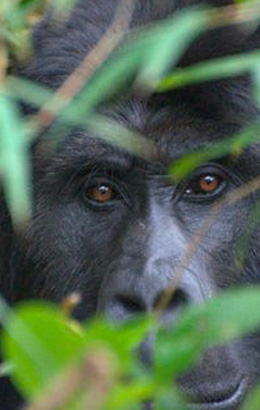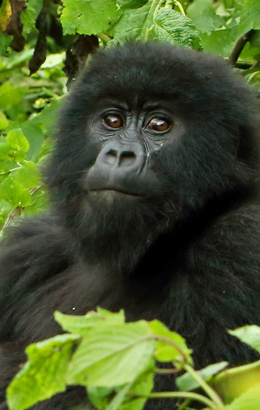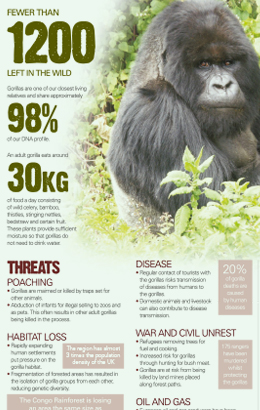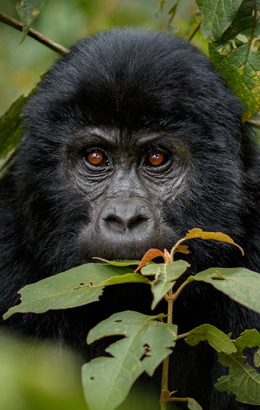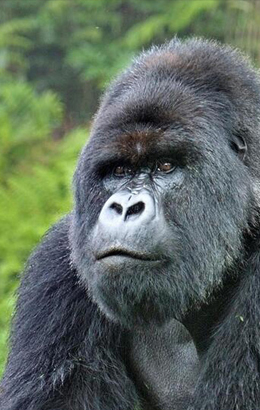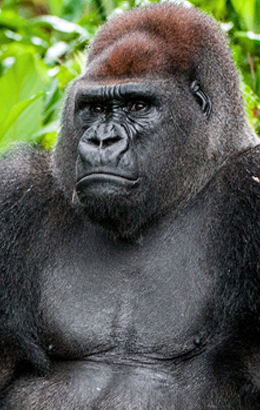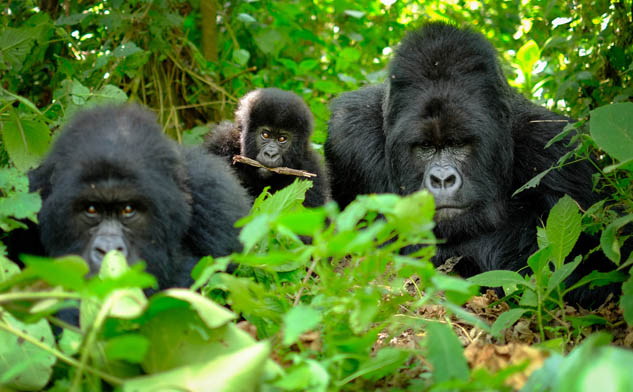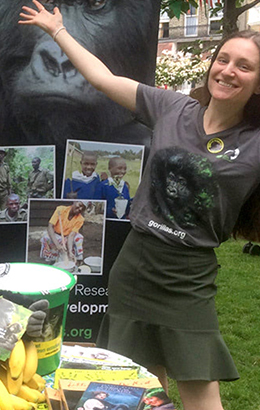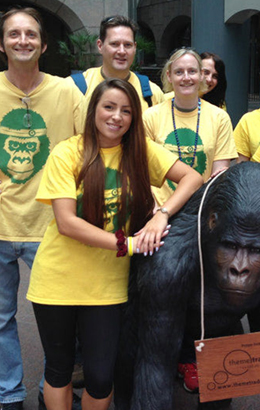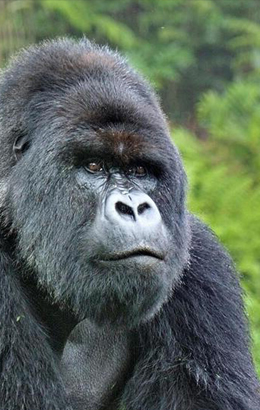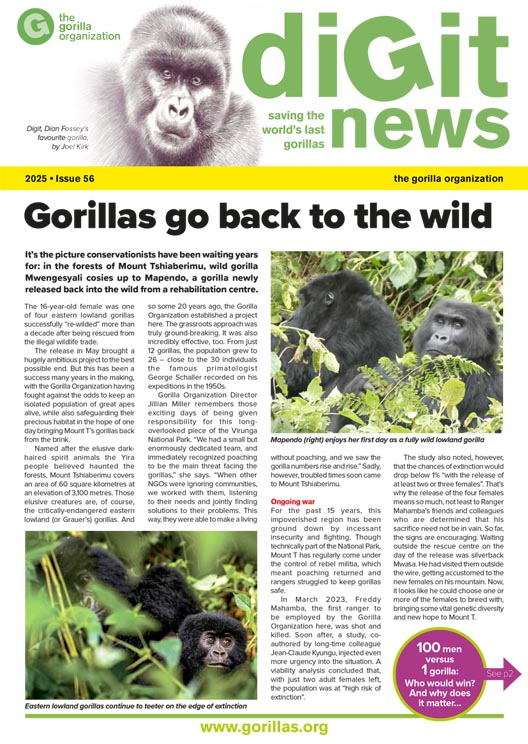The conflict in eastern Democratic Republic of Congo has shaped life in this region for decades. Armed groups have operated…
Gorillas go back to the wild
Extract from our Autumn newsletter – Digit News
It’s the picture conservationists have been waiting years for: in the forests of Mount Tshiaberimu, wild gorilla Mwengesyali cosies up to Mapendo, a gorilla newly released back into the wild from a rehabilitation centre.
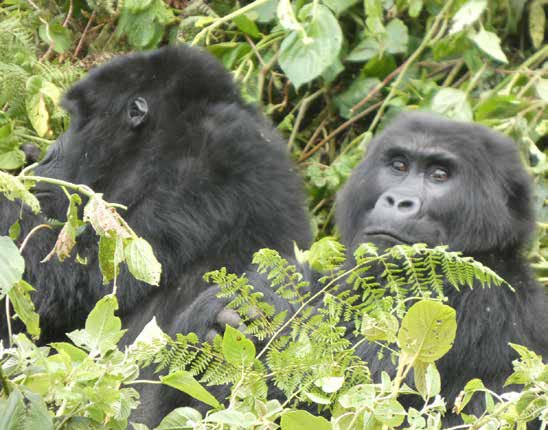
The 16-year-old female was one of four eastern lowland gorillas successfully “re-wilded” more than a decade after being rescued from the illegal wildlife trade.
The release in May brought a hugely ambitious project to the best possible end. But this has been a success many years in the making, with the Gorilla Organization having fought against the odds to keep an isolated population of great apes alive, while also safeguarding their precious habitat in the hope of one day bringing Mount T’s gorillas back from the brink.
Named after the elusive darkhaired spirit animals the Yira people believed haunted the forests, Mount Tshiaberimu covers an area of 60 square kilometres at an elevation of 3,100 metres. Those elusive creatures are, of course, the critically-endangered eastern lowland (or Grauer’s) gorillas. And so some 20 years ago, the Gorilla Organization established a project here. The grassroots approach was truly ground-breaking. It was also incredibly effective, too. From just 12 gorillas, the population grew to 26 – close to the 30 individuals the famous primatologist George Schaller recorded on his expeditions in the 1950s.
Gorilla Organization Director Jillian Miller remembers those exciting days of being given responsibility for this longoverlooked piece of the Virunga National Park. “We had a small but enormously dedicated team, and immediately recognized poaching to be the main threat facing the gorillas,” she says. “When other NGOs were ignoring communities, we worked with them, listening to their needs and jointly finding solutions to their problems. This way, they were able to make a living without poaching, and we saw the gorilla numbers rise and rise.” Sadly, however, troubled times soon came to Mount Tshiaberimu.
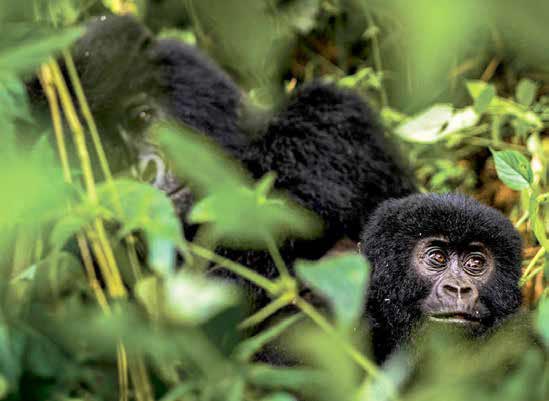
Ongoing war
For the past 15 years, this impoverished region has been ground down by incessant insecurity and fighting. Though technically part of the National Park, Mount T has regularly come under the control of rebel militia, which meant poaching returned and rangers struggled to keep gorillas safe.
In March 2023, Freddy Mahamba, the first ranger to be employed by the Gorilla Organization here, was shot and killed. Soon after, a study, coauthored by long-time colleague Jean-Claude Kyungu, injected even more urgency into the situation. A viability analysis concluded that, with just two adult females left, the population was at “high risk of extinction”.
The study also noted, however, that the chances of extinction would drop below 1% “with the release of at least two or three females”. That’s why the release of the four females means so much, not least to Ranger Mahamba’s friends and colleagues who are determined that his sacrifice need not be in vain. So far, the signs are encouraging. Waiting outside the rescue centre on the day of the release was silverback Mwasa. He had visited them outside the wire, getting accustomed to the new females on his mountain. Now, it looks like he could choose one or more of the females to breed with, bringing some vital genetic diversity and new hope to Mount T.
To see the full edition of Digit News download here
Make a difference – help today!
More News

Why the conflict in eastern DRC is so dangerous for gorillas
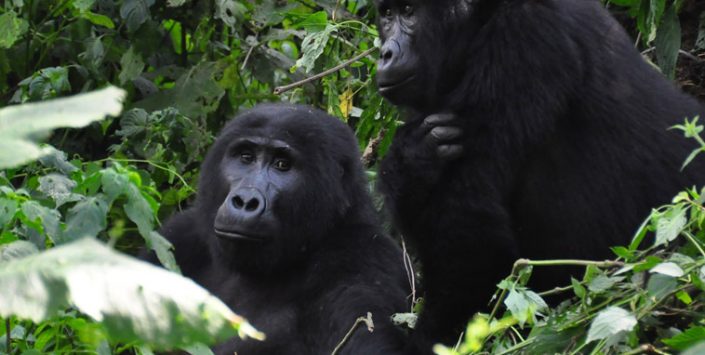
Gorillas stay stable, but remain “Critically-Endangered”
Despite the recent and ongoing insecurity in eastern DR Congo, the status of gorillas in the wild remains largely stable.…

Remembering Jane Goodall – a true friend of the gorillas
Dr Jane Goodall, the visionary primatologist and tireless environmental campaigner, has died at the age of 91. Her groundbreaking work…
